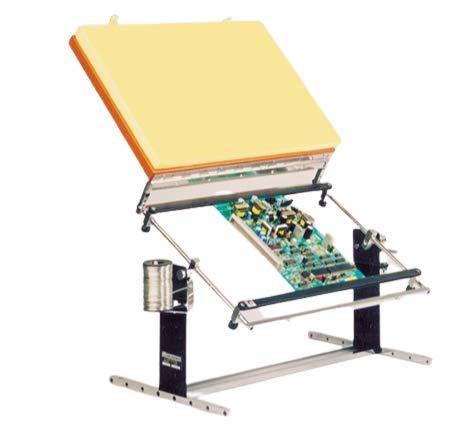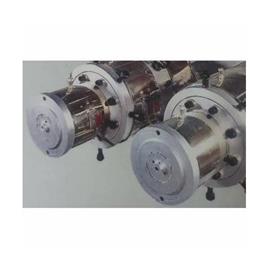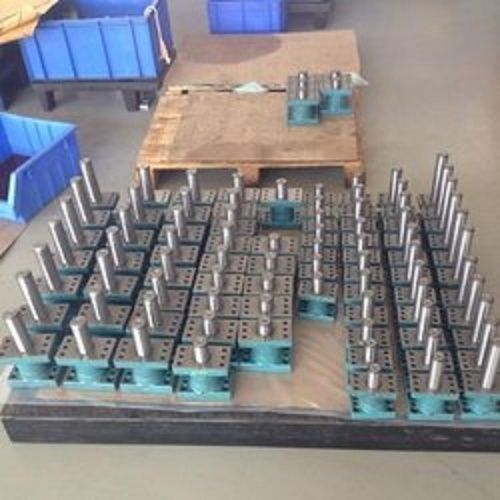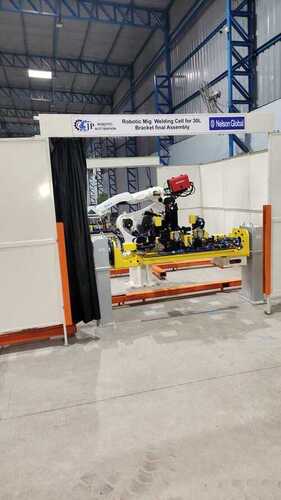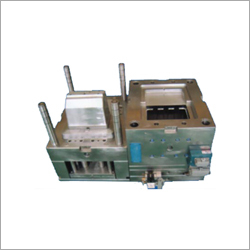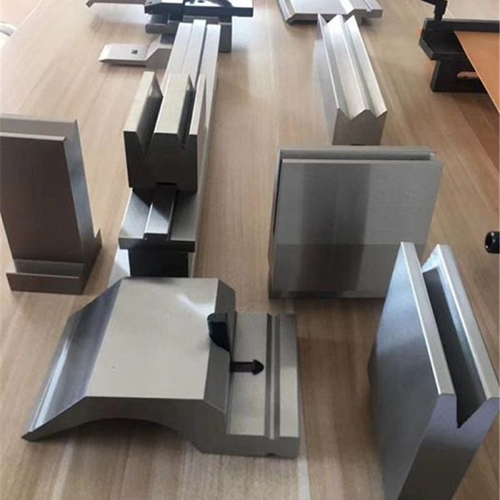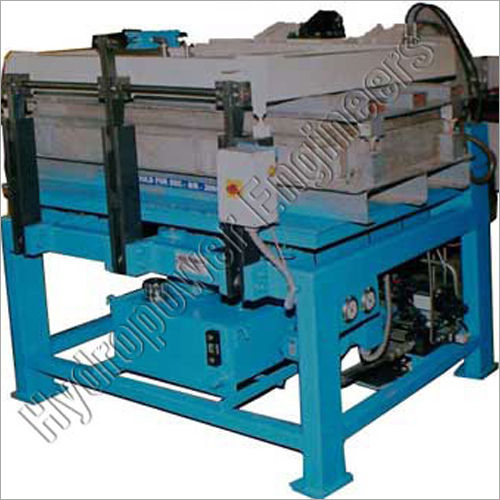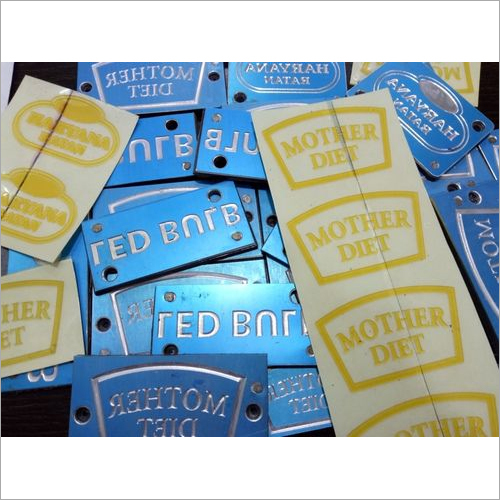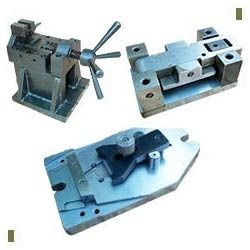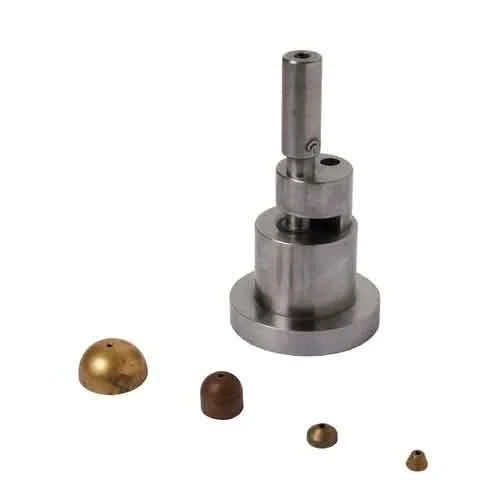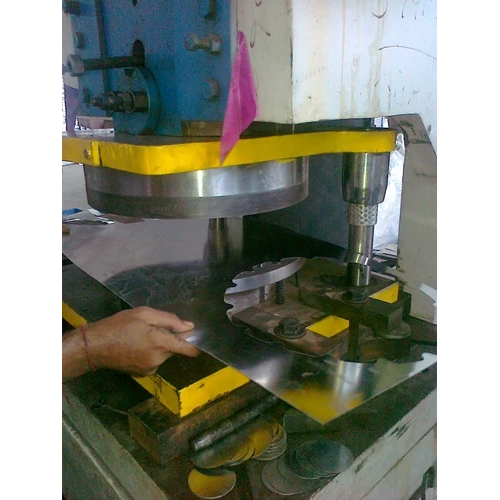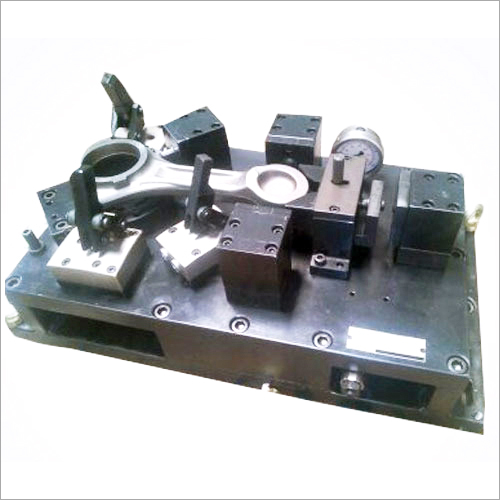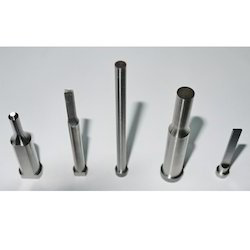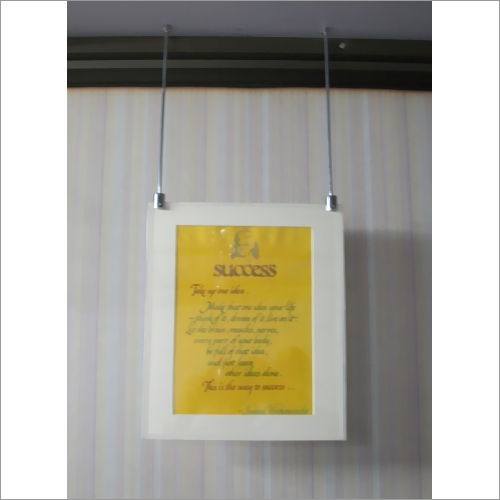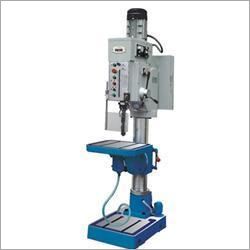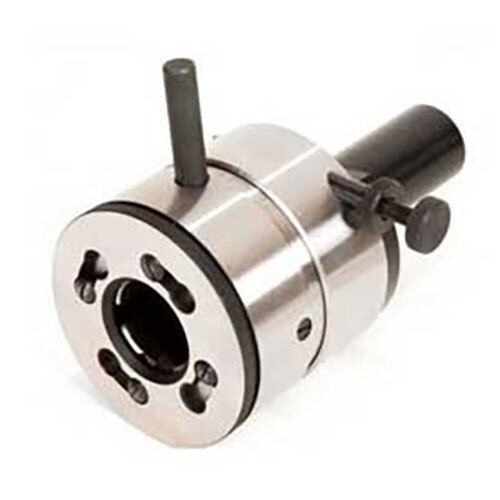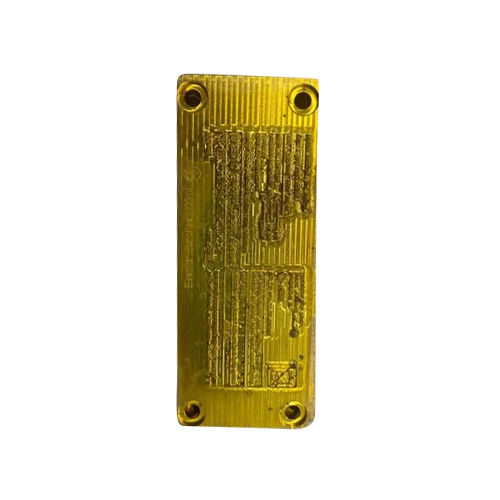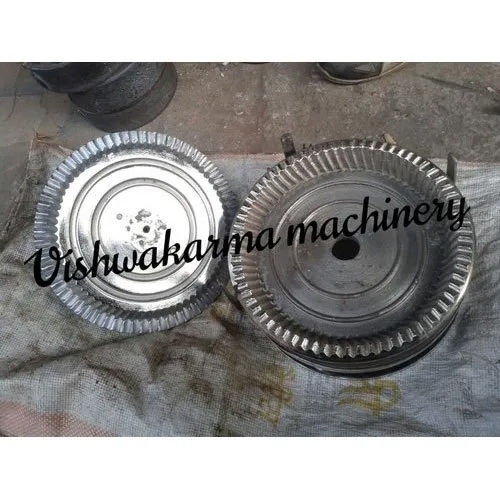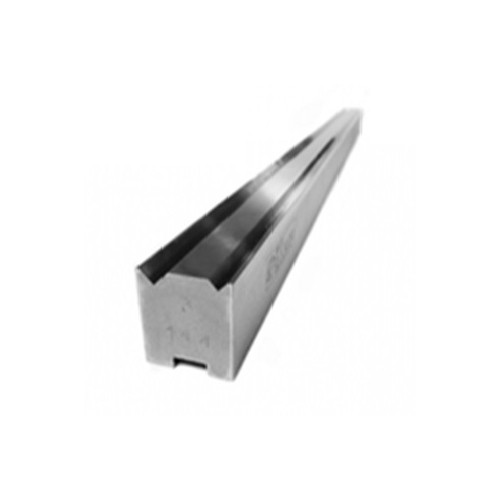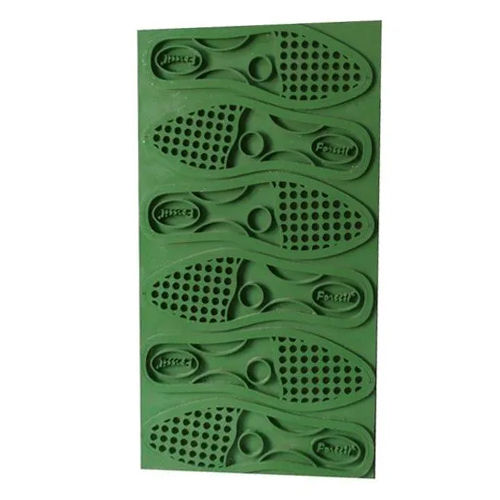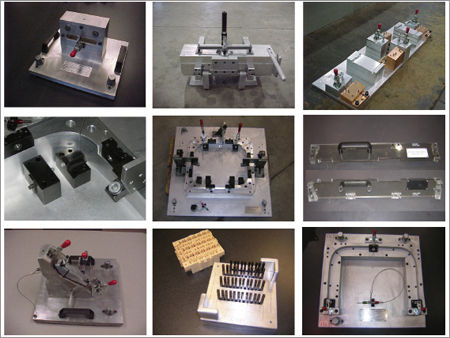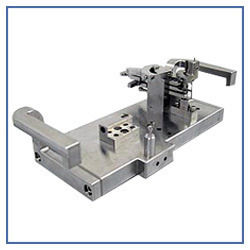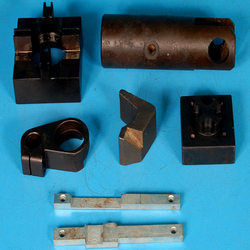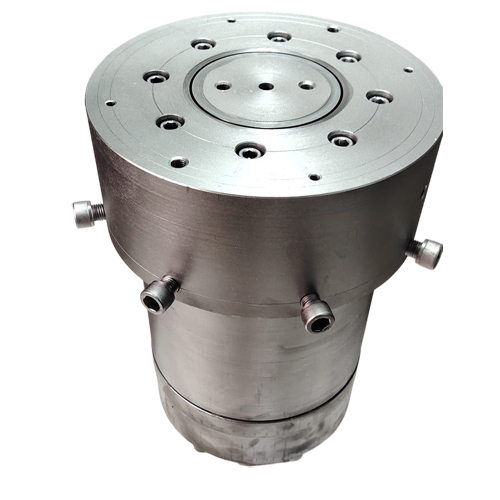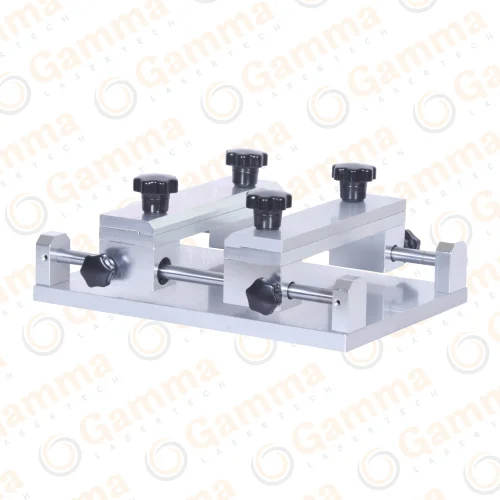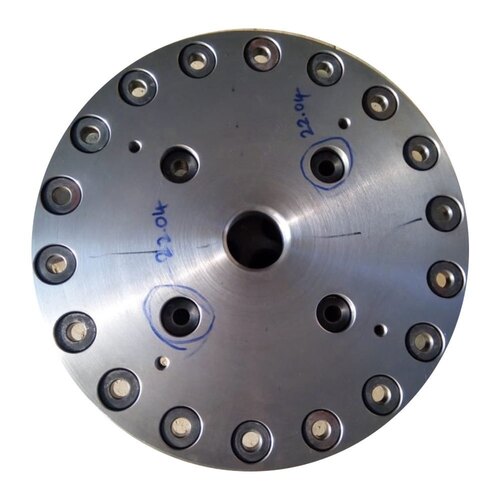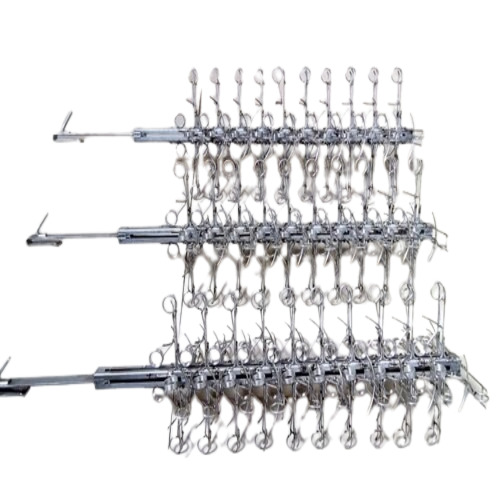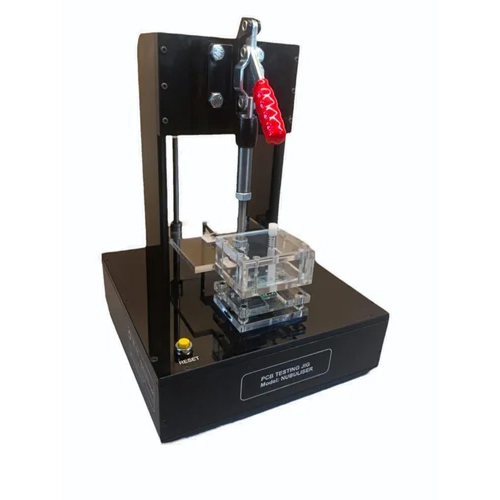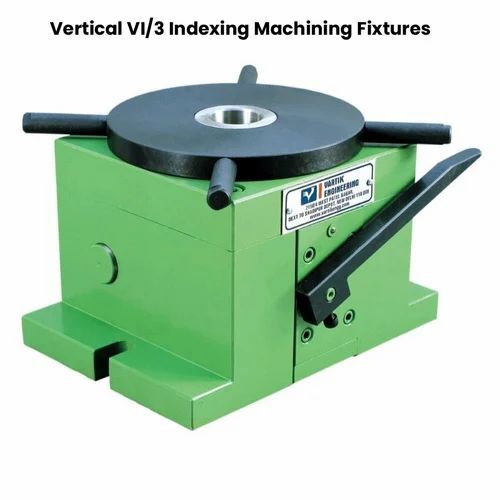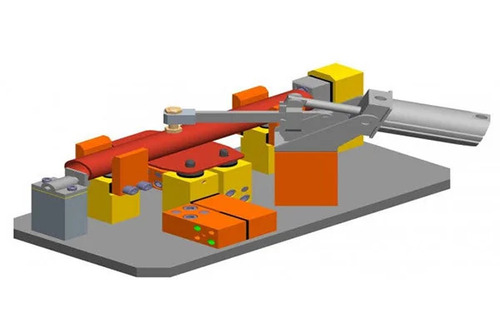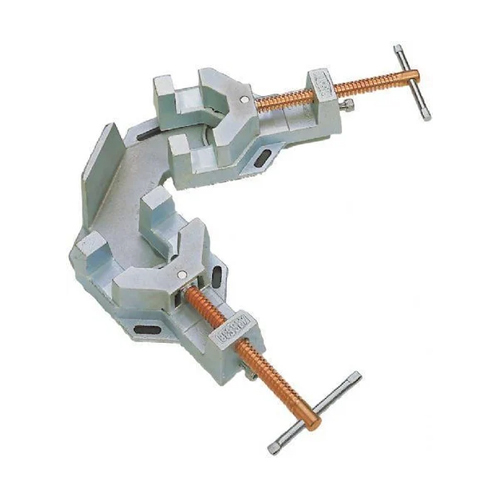Dies,Jigs,Fixtures
(4857 products)3D Stamping Die
Product DescriptionOur organization is involved in Manufacturer, Service Provider & Supplier of 3d Stamping Die in Vasai, Maharashtra, India. These are manufactured by using supreme quality raw material, sourced from the renowned vendors of the industry. Moreover, We are cent percent ensure about the product quality
Pcb Assembly Jig Usage: Industrial
Price: 7200 INR/Unit
MOQ1 Unit/Units
UsageIndustrial
Pvc Pipe Twin Die Head, Usage/Application: Industrial
Product DescriptionPvc Pipe Twin Die Head
Stainless Steel Pillar Die Set Application: Industrial
Die HeadPillar Die Set
UsageIndustrial
Height2-4 Inch (in)
Product TypeStainless Steel Pillar Die Set
MaterialStainless Steel, Other
ApplicationIndustrial
Ve To Clamping Systems Private Limited
Faridabad
Biw Fixture Cue Joint: Stainless Steel
Product DescriptionWe are manufacturing BIW Fixtures which are frequently used for welding\015\012purpose in automobile industry. BIW is an abbreviation of word Body in\015\012White which refers to a body or shell of a vehicle in a stage before\015\012adding component.\015\012
Robotic Mig Welding Cell - High Precision, Automated Welding Solutions for Enhanced Productivity
Price: 1650000 INR/Number
MOQ10 Number
Product DescriptionRobotic Welding Cell
Silver Plastic Dies
Price Trend: 5000.00 - 10000.00 INR/Piece
MOQ1000 Piece/Pieces
Product TypePlastic Dies
ColorSilver
UsageIndustrial
MaterialSteel
Drishti Polymers
Ahmedabad
 Premium Seller
Premium Seller18 Years
Jigs & Fixtures - Copper & Brass Material, Custom-Built for Bulk Production Applications, Specialized for Internal Coating on Rims
Product DescriptionFor bulk / large scale production applications, components will have to be held by specific devices in configuration and quantities most practical per jig. Jigs carry required current from the rectifier to the components and thus are made from material fairly electrically conductive. Brass or the mo
Cnc Press Brake Bending Machine Punch And Die Press - Application: Industrial
MOQ1 Unit/Units
Product TypePress Brake Die
WarrantyYes
MaterialMetal
ApplicationIndustrial
HardnessRigid
Nanjing Prima Cnc Machinery Co., Ltd.
Nanjing
PU Foam Moulding Fixture - Standard Size | Industrial Application, 1-Year Warranty
Price Trend: 100000.00 - 500000.00 INR/Unit
MOQ1 Unit/Units
Product TypeMoulding Fixture
Warranty1 Year
SizeStandard
MaterialOther
ApplicationIndustrial
Hydro Power Engineering System
Bengaluru
Male-Female Embossing Blocks
Price: 423.0 INR/Unit
MOQ1 Unit/Units
Supply Ability1 Per Day
Delivery Time1 Days
Sample AvailableNo
Acute Laser Die India Llp
New Delhi
 Trusted Seller
Trusted Seller10 Years
Jigs And Fixtures - Advanced Manufacturing Technology, Precision Engineering | Premium Quality at Affordable Prices
Product DescriptionWe are delivering a wide range of Jigs And Fixtures to our highly valued clients. These are manufacture by utilizing supreme technology and advance machinery to meet the standards of the industry. Our products are easily procurable at a very low market prices
Plastic Fitting Precision Mold - Plastic Material, Industrial Usage | Warranty Provided, High Precision Shaping Mode
MOQ100 Piece/Pieces
UsageIndustrial
Product TypePrecision Mold
WarrantyYes
Shaping ModePlastic
MaterialPlastic
Sarvatra Industries (india) Private Limited
Faridabad
ACCURA Model Punches And Dies
Product DescriptionOwing to our rich experience and vast industrial knowledge, we have been able to manufacture, export and supply a range highly qualitative ACCURA Model Punches And Dies from Ahmedabad, Gujarat, India. The ACCURA Model Punches And Dies offered by us is manufactured by our experts using the fine grade
Spring Half Ball Para Dies - Color: Silver
Price: 1500 INR/Unit
MOQ10 Unit/Units
Die HeadRound
WarrantyYes
Size2.5 mm to 45 mm
Product TypeDies
UsageIndustrial
ColorSilver
Drum Top Dies Hardness: Hard
Price: 80000 INR/Unit
MOQ10 Unit/Units
UsageIndustrial
MaterialSteel
HardnessHard
Plastic Die Mould - Color: Silver
Price: 39989 INR/Piece
MOQ1 Piece/Pieces
SizeStandard
UsageIndustrial
Product TypePlastic Die Mould
ColorSilver
Warrantyyes
MaterialAluminum
Steel Die Punches Usage: Automobile Industry
Price: 50 INR/Piece
Product TypeDie Punches
UsageAutomobile Industry
MaterialOther
Rectangular Signage Hanging Wire System
Product DescriptionRectangular Signage Hanging Wire System
Ranjit Brass Sales
Mumbai
 Trusted Seller
Trusted Seller7 Years
Jig and Fixture For Drilling
Price: 12300 INR/Number
MOQ1 Number
Delivery Time1 Days
Main Domestic MarketAll India
Precision Pipe Bending Dies - Color: Silver
MOQ1 Unit/Units
Product TypePrecision Pipe Bending Dies
SizeDifferent available
Working ProcessPunching
ColorSilver
UsageIndustrial
Warranty1 Year
Coventry Die Head - Color: Silver
Price: 23000.0 INR/Piece
MOQ1 Piece/Pieces
Life Span25
UsageIndustrial
Working ProcessOther
Die HeadThreading
Width90 Millimeter (mm)
Height240 Millimeter (mm)
Super Threading (india) Pvt. Ltd.
Ludhiana
 Premium Seller
Premium Seller3 Years
4X6 Inch Brass Stamping Die Hardness: Hard
Price: 8500 INR/Piece
MOQ100 Piece/Pieces
Life SpanLong Life
Working ProcessStamping
WarrantyYes
SizeVarious Sizes Available
Shaping ModeBlowing Mould
MaterialMetal
Wrinkle Paper Plate Die - Hardness: Hard
Price: 10000 INR/Unit
MOQ10 Unit/Units
Working ProcessBending
UsageIndustrial
MaterialSteel
HardnessHard
Dried Flat Wire Drawing Die
Payment TermsTelegraphic Transfer (T/T), Others
Delivery Time1 Week
Sample PolicyContact us for information regarding our sample policy
Bending Dies - Color: Silver
Price: 50000 INR/Unit
MOQ1 Unit/Units
ColorSilver
Working ProcessBending
WarrantyYes
UsageUsed To Bend And Fold Metal By Pressing It Into A Die.
Product TypeBending Dies
MaterialOther, Stainless Steel
7Mm Brass Slippers Die Set - Color: As Per Availability
Price: 15000 INR/Pair
MOQ1 Pair/Pairs
UsageIndustrial
ColorAs Per Availability
WarrantyYes
Life SpanLong Life
SizeCustomized
Shaping ModeExtrusion Mould
Aasha Die Maker
New Delhi
 Trusted Seller
Trusted Seller2 Years
Latest From Dies,jigs,fixtures
Jig Fixtures
By:
Gangotri Automation
Jigs & Fixtures
By:
Lakshmi Tools & Equipments
Industrial Sheet Metal Parts
By:
Kalyani Stampings Private Limited
Jigs
By:
Vishwa Enterprise
Press Tools
By:
Proto-d Engineering Pvt. Ltd.
Explore More Cities
Ready To Ship Dies,jigs,fixtures
Dies and moulds: Types & Applications
Compression molds, injection molds, transfer molds, and blow molds are all examples of basic mold types used in plastic processing, and they are typically categorized according to the number of cavities they include.
Die Types:
1. Simple Die
One operation every press slide stroke characterizes a simple die, also called a single-operation die. This die style is more commonly employed for less substantial tasks in the business world. Producing lightweight metal components is one such application.
2. Compound Die
With a compound die, you can accomplish more than one thing at once, such cutting or punching. For more complicated blanking and piercing tasks, a compound die can complete the work more quickly. Instead of performing each step individually, the compound die may blank and pierce in one fell swoop. For mass-produced items, this is the best option.
3. Combination Die
The combination die is functionally and aesthetically identical to the compound die. It's multitasking abilities mean it can process multiple requests simultaneously, so you get more accurate and timely responses. The combination die has additional utility as a cutting and shaping tool.
Mold Types:
1. Single –Cavity Mold
One of the most fundamental mold concepts is this mold. Only one part at a time can be molded using this mold.
2. Dedicated Multiple Cavity Mold
In order to mass-produce an item, factories will use specialised molds with several cavities. Because it is simple to regulate the plastic flow using this mold, it has found widespread use.
3. Family Mold
Due to the short molding times, prototype molds benefit greatly from family cavity molds. Multiple cavities in a family injection mold allow for the simultaneous creation of several identical products within a single molding run.
4. Two-Plate Mold
When creating plastic components, a two-plate mold is employed. This sort of molding is extremely frequent because of how simple it is to execute.
5. Three-Plate Mold
In three-plate molds, the runner is housed in the third plate, known as the striper. A double-action ejector mechanism ensures that the runner is not thrown out along with the component.
Dies And Moulds Meaning
Tools for making precise shapes include dies and molds. Sheet metal and other metal shapes can be shaped with dies. The automotive industry is a prime example of this type of use. In contrast, injection molding employs molds for the creation of plastic parts from liquid resin or metal castings from molten metal
In modern manufacturing, molds and dies are indispensable instruments for mass production. Molds are used in injection molding to form resin and in casting, while dies are used in stamping; both play critical roles in the production process.
Modern methods allow for the creation of molds and dies with micron-order precision, facilitating the mass manufacture of products with consistent form and quality across many industries.
Mould And Die Design
1. Stacked mold Design
The cavities in a stacked injection Dies & Moulds are arranged in rows and columns. This allows several cavities to be set up in a single device. By stacking four single cavities in an injection machine, for instance, four identical parts can be manufactured in a single cycle.
As a result, the efficiency of the machine is increased. Injection molds are further classified as either Hot runner molds or Cold runner molds based on the feeding system.
2. Hot Runner mold design
It is common practice for a hot runner mold system to include hot nozzles, temperature control boxes, manifolds, and accessories. An integral part of hot runner molds is the runner system, which is heated in advance by means of rods, coils, or heating components. In a three-plate mold, the runner system is contained within a stationary plate.
Even if the part cools down, the runner system will keep it at a safe temperature. A runnerless mold is one in which the runner does not release the portion. There won't be a need to go through an extra step to get rid of the runner.
Due of the necessity for a heating system to heat the runner, hot runner molds tend to be more costly. It also increases the price of the mold by adding an extra plate. It's also difficult to clean the runner system because the runners are hard to access due to being embedded in the mold.
Hot runner molds are more difficult to run and keep in good condition than cold runner molds. Changing the material of the part requires extensive labor on the part of the mold.
3. Transfer Die Design
Several tools can be operated with just one press using the transfer die. Using transfer dies has certain benefits, especially in mass production. To finish shaping a metal workpiece, it can freely transfer the work by adding shape.
In the past, each step of these procedures was completed by hand, with the workpiece being transferred manually between separate presses and dies. Single-press efficiency is greatly improved by automating the transfer process.
4. Progressive Die Design
A progressive die can do numerous operations at once, but it does so in stages at different machines. The progressive die is superior because of the increased productivity that comes from working quickly while using less force.
The progressive die makes it simpler to achieve peak punching efficiency in a multi-station layout, despite the fact that its management is more complex than that of a single-station device.
To mass produce complex components like those used in automobiles and electronics, engineers employ progressive dies.
Difference Between Mould And Die
Die
- A die is a specialized piece of machinery utilized in the industrial sector for cutting and/or forming materials into the desired form. A die is used to shape only two of a part's three dimensions, as opposed to a mold, which shapes the item from start to finish. Other process variables determine the third dimension, which is typically thickness or length.
- Tool steel, a special type of carbon steel and alloy steel, is commonly used in the production of dies and other types of tooling such as cutting tools and hand tools.
- High strength, wear resistance, plus impact toughness at both room temperature and higher temperatures are the hallmarks of tool steels' unique alloy composition. Dies are helpful because of the volume of material they can cut.
Mold
- A mold is a tool used in manufacturing that is designed to create objects of a specific design and dimensions. Materials can be shaped into components or finished goods by applying pressure using specialized tools that are mounted on the press as part of the manufacturing process.
- A mold is used to create a complete three-dimensional plastic item during plastic manufacturing. Metal-plastic forming molds, mold injection molds and Casting molds are just a few examples of the many categories of molds, but their common purpose is obvious.
- Blow molding, reaction injection molding, thermoforming, and Injection molding, are all mold-based plastics processing techniques.
Die And Mold Industry
1. Overview
From 2020 to 2025, the Indian dies and molds market is forecast to expand by USD 1.47 billion, representing a compound annual growth rate (CAGR) of 9%.
2. Trends and Challenges
As far as we can tell, the expansion of the market before, during, and after the COVID-19 era was unaffected. Growth in the dies and molds market in India is being propelled by new possibilities in aluminum metal injection molding, but the market could be stymied by issues including a shortage of competent workers in the industrial sector.
The researchers have analyzed past data to identify the leading market drivers and the consequences of the COVID-19 pandemic for India's dies and molds sector. In order to deduce objectives and fine-tune advertising campaigns to get an advantage over the competition, a comprehensive analysis of the drivers is required.
3. Key Players
- Godrej & Boyce Manufacturing Co. Ltd.
- Alfa Plast Mould, Classic Die Tools
- Hindustan Die Castings
- Sankalp Engineering & Services Pvt. Ltd.
- NAGATA AUTO PARTS Co. Ltd.
- JPM Group
- DIETECH INDIA (P) Ltd.
Conclusion
Plastics, resin, and metal casting are common uses for molds. A die is a tool used for cutting and shaping metal into a specific profile. Commonly, the same alloys were used for both dies and molds. However, a durable mold manufactured from high-strength metals isn't always necessary, especially for smaller applications. After that, we may switch to using materials like plastic, silicone, and wood to create molds.
FAQs: Dies and moulds
Q. What are the top Die And Mould Manufacturers in India?
Ans. Here are the top manufactures:
- Godrej & Boyce Manufacturing Co. Ltd.
- Hindustan Die Castings
- Sankalp Engineering & Services
- Greatoo Intelligent Equipment Inc.
Q. Types of Moulds And Dies.
Ans. Here are some basic types:
- Simple Die
- Compound Die
- Transfer Die
- Single Cavity Mold
- Dedicated Multiple Cavity Mold
- Two plate mold
- Three Plate mold
- Cold Runner mold
Q. How to start Dies and Mould in India.
Ans. Here are the steps:
- Find a niche and focus
- Plant Layout
- Warehousing for injection molding
- Required molding machine
- Select the equipment
Q. Applications of Dies and Mould
Ans. Die cutters and molds serve the same function in the manufacturing industry. Metal sheet and other shapes can be formed using dies. Fabricating car bodies is a common use case. Conversely, injection molding, which can be done with molten resin or metal, requires the usage of molds.
Manufacturers & Suppliers of Dies,jigs,fixtures
Company Name | Member Since |
|---|---|
Estovir Technologies Faridabad, India | 24 Years |
Hydro Power Engineering System Bengaluru, India | 20 Years |
Drishti Polymers Ahmedabad, India | 18 Years |
Jendamark India Private Limited Pune, India | 16 Years |
J V Machine Tools Private Limited Alwar, India | 11 Years |
Acute Laser Die India Llp New Delhi, India | 10 Years |
National Trading Company Bhiwandi, India | 10 Years |
Genaue Group Faridabad, India | 9 Years |
Jyoti Hydraulic Faridabad, India | 9 Years |
Prakruti Graphics Pvt. Ltd. Vasai, India | 8 Years |
Popular Products



